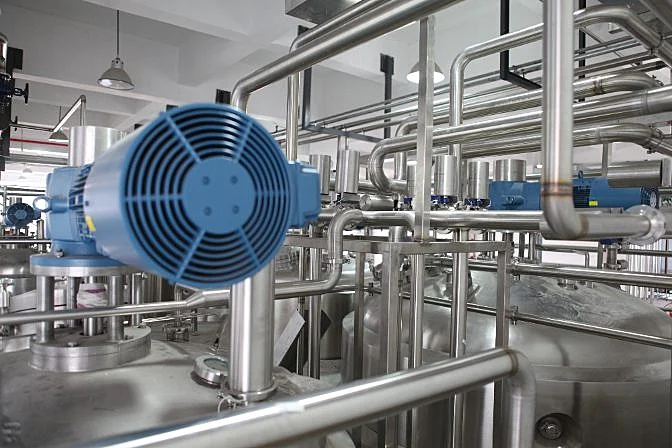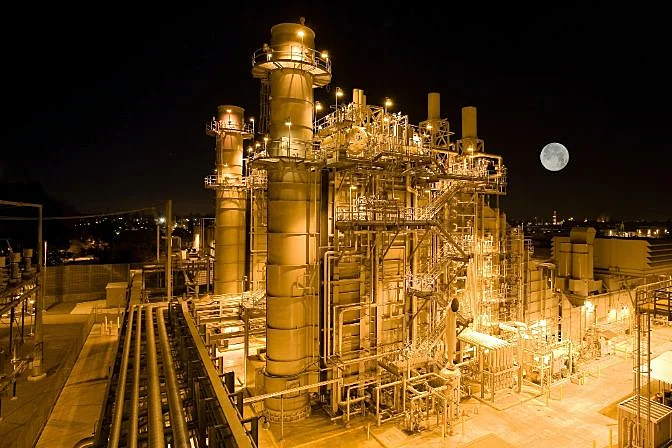What Is Turnaround Time? What Is Downtime?
What Is Turnaround Time? What Is Downtime?
Turnaround time is the amount of time it takes to complete a process. While the term "downtime" is often used interchangeably, it's important to understand that both concepts are closely related but not always the same.
Think of turnaround time as the total duration from when a request is made or a task begins until it’s fully completed. This concept applies across various industries and situations, from manufacturing to computing and logistics.
In industrial environments, turnaround time refers to the period during which equipment like boilers, pressure vessels, or entire plants must be shut down for maintenance, upgrades, or necessary modifications. This downtime is often planned in advance and can last days or even weeks, depending on the complexity of the work involved.
In computing, turnaround time is defined as the time between the submission of a program or process and the delivery of its output. In warehouse logistics, it measures the time from when an order is placed until it’s successfully fulfilled and delivered to the customer.
Turnaround time is also used in other contexts, such as healthcare, where it might refer to the time it takes for a patient to receive treatment after being admitted. The key idea remains the same: it’s the time required to complete a specific process or task.

Â
Â
What Does Turnaround Time Mean?
In an industrial setting, turnaround time typically refers to the time required to stop operations—whether it's a single piece of equipment or an entire plant—for maintenance, repairs, or upgrades. This period is often referred to as downtime, a planned outage, or a plant shutdown.
If a full plant needs to be taken offline, the turnaround time includes the entire duration during which production is halted while workers perform their tasks. It’s a critical phase where nothing is being produced, and all attention is focused on completing the necessary work.
Turnaround times are usually scheduled well in advance. However, unexpected issues can lead to unplanned downtime as well. In such cases, the time required to resolve the problem and restore normal operations is still considered part of the turnaround process.
During planned turnarounds, common activities include regular maintenance, part replacements, repairs, system upgrades, and responses to unusual events such as global health crises. These events can also require temporary shutdowns for safety and compliance reasons.

Why Turnaround Time Is So Important
Turnaround time directly affects productivity and profitability. When a plant or system is offline, it’s not generating revenue. Every minute spent in downtime is a minute lost in potential earnings.
This is especially true in industries like power generation, where even a short shutdown can result in significant financial losses. For large-scale operations such as oil refineries or power plants, a single day of downtime can cost tens of thousands—or even millions—of dollars.
Despite the financial impact, some level of downtime is unavoidable. Machines need regular inspections, maintenance, and upgrades to function safely and efficiently. During these periods, operations must pause so that technicians can assess and repair any issues.

Five Steps to Reduce Turnaround Time
Reducing turnaround time is crucial for maintaining efficiency and minimizing costs. Here are five effective strategies to help shorten these periods without compromising safety:
1. Plan Ahead
For routine maintenance and inspections, planning is essential. Identify the steps needed, set a detailed schedule, assign roles, and prepare necessary equipment. Conducting dry runs can also help identify potential issues before the actual turnaround begins.
2. Consider Engineering Needs
If your turnaround involves complex engineering work, ensure that all requirements are clearly identified in advance. Test new technologies before installation and confirm they’re working properly before resuming operations.
3. Coordinate Schedules and Communication
Effective communication with all stakeholders is key. Ensure everyone is informed about the timeline and expectations to avoid confusion and delays.
4. Manage the Turnaround Period Efficiently
During the turnaround, clear leadership and organization are vital. An experienced manager can keep the team on track, address issues quickly, and ensure everything is done safely and efficiently.
5. Document and Analyze Post-Turnaround
After the turnaround, review what worked and what didn’t. This helps improve future processes and reduce downtime over time.

How Drones Help Significantly Reduce Turnaround Times
In addition to the five steps above, integrating advanced technology like drones can further enhance efficiency and reduce downtime. Drones, such as the Elios 3, offer innovative solutions for inspection and data collection in hard-to-reach areas.
Here are two main benefits of using drones during turnarounds:
1. Reducing the Need for Scaffolding
Traditional inspections in confined spaces like boilers or pressure vessels often require scaffolding, which is time-consuming to build and dismantle. Drones eliminate this step by allowing inspectors to collect visual data quickly and safely without the need for physical structures.
2. Speeding Up Data Collection
Drones can inspect assets much faster than manual methods. One company reported that using the Elios 2 drone reduced inspection time from 30 hours to just 10 hours, saving 20 hours of valuable turnaround time.
These time savings translate into significant cost reductions and improved operational efficiency. Drones not only speed up the process but also enhance safety by reducing the need for human entry into hazardous environments.
Below are some real-world examples of how companies have benefited from using drones during their turnarounds:
- $2 Million Saved Using Elios 2 for Oil Tanker Cargo Inspection
- Drones in Chimney Inspections: Elios 2 Helps Personnel Avoid Dangerous Climbs
- Grain Bin Inspection Sees Improved Safety, 95% Cost Reduction with Elios 2
- Elios 3's 3D Mapping Helps City of Lausanne Water Department Inspections
Color Coated Steel Coil,Colour Coated Coil,Color Coated Coil,Color Steel Coil
Shandong Jianlong Special Steel Co., Ltd. , https://www.jianlongsteelpipe.com